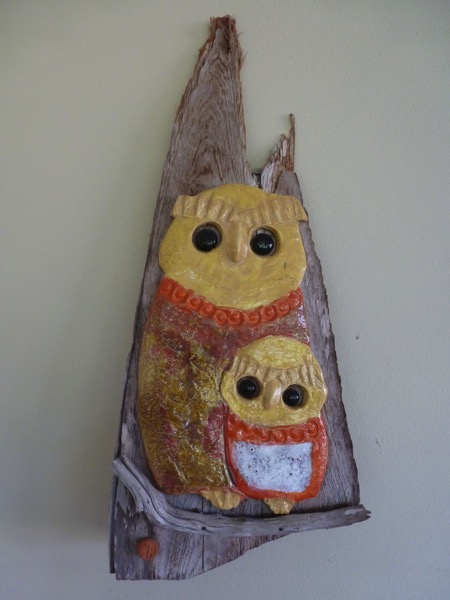The Vinegar Solution
Tom did all of the glaze formulation and experimenting, while Mary put Tom’s findings to use. While Tom was the technician, he did play with his results, using fish and face plaques as “tiles” but it was Mary who was the genius when it came to using Tom’s glazes to create the effects that the later pieces produced by Mary Blakley Ceramics were noted for.
If Tom had been employed by a commercial dinner ware firm, he would have been fired the first day because he violated every rule in the glaze formulation book. His glazes were chemically unstable, too stiff, too runny, they crazed and crackled because they didn’t fit the clay body … the list goes on and on. I’ve seen one result of those chemically unstable glazes lately, in my visits to the wonderful people who have allowed me to photograph their pieces: glazes that turn white over time. Here is an owl plaque that I photographed today that shows what I mean:

If you own a piece that has areas that look like the belly of the smaller owl in this photograph, the way to remove that white film is to wipe the area with a paper towel moistened with vinegar. Vinegar is a mild acid and it will remove the white film, restoring the glaze to its original color. Using vinegar won’t damage the glaze – it will just remove the white film.

Love the colors on this piece, it’s very similar to mine. Only the colors.